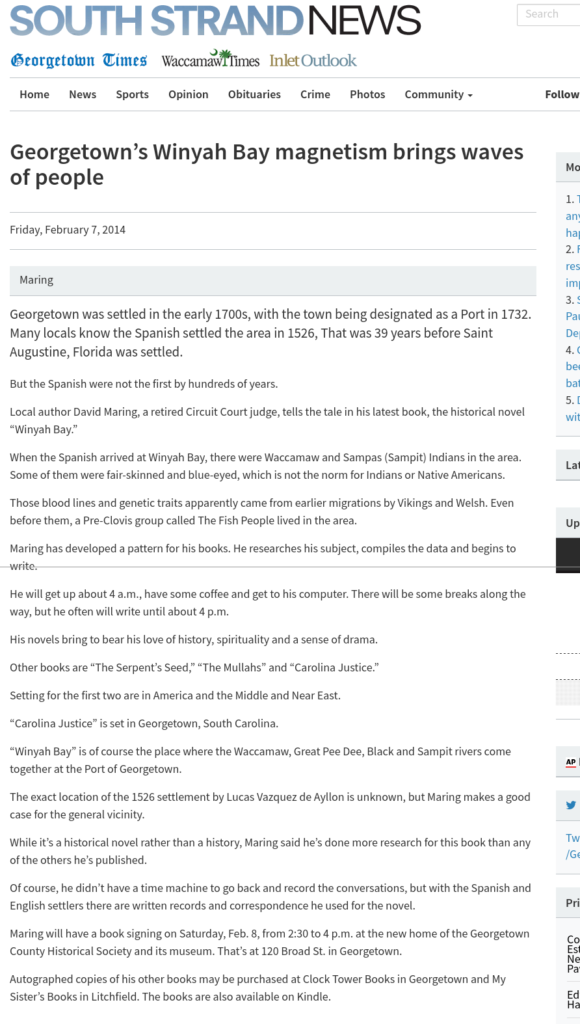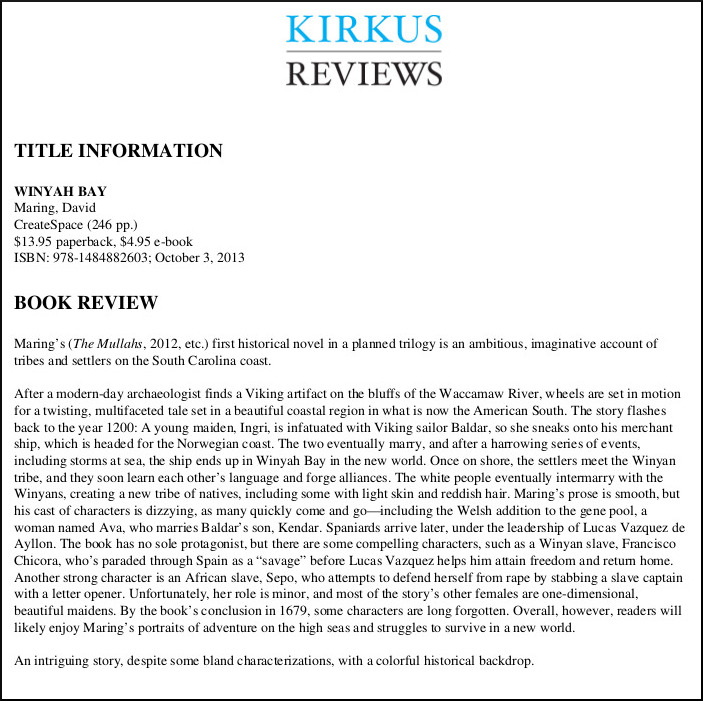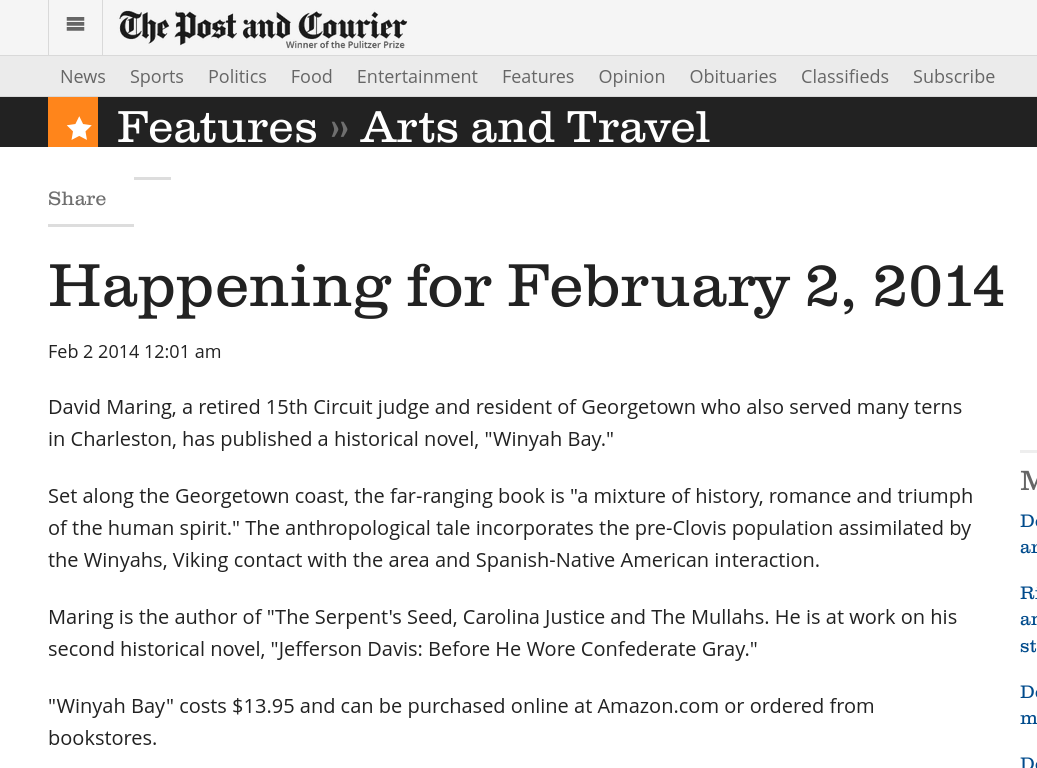Winyah Bay
The story of Winyah Bay is one that has lain hidden for many years, but a recent archeological excavation finally uncovers its secrets. The story of the unforgettable people of the bay is revealed in a mixture of history, romance, and the triumph of the human spirit.
During early human migrations, cultures prosper upon its banks, and then disappear. The first group to inhabit the area is a Pre-Clovis people. They come from Europe during an ice age when that continent is connected to North American. They became extinct after the arrival of the Sioux, who migrate from Asia when ice connects Alaska with that continent. This tribe’s gene pool is later expanded by the Vikings and Welsh.
In 1521 Captain Gordillo arrives in Winyah Bay on a mission to find a suitable location for a settlement. The Spanish capture Indians who have a white complexion. When the ship returns to Santo Domingo, Lucas Vazquez de Ayllon, who financed the expedition, takes one of the natives as a servant. He names him Francisco after Saint Francis, and Chicora after the land that he claims is his country. Lucas takes Chicora to Spain, where he attends the court of King Charles in Seville. The Spanish nobleman receives a charter to settle the Winyah Bay Area. In 1526 Lucas arrives at the mouth of Winyah Bay with 600 settlers and 70 slaves. There will be trouble with the Indians and the slaves. But it is a fever that will doom the settlement. Many years after the Spanish depart, a British trader from Charles Town arrives in the region. He finds a local population that has been changed by their earlier contacts with Europeans. After taking a wife whose brother is chief, he becomes a man torn between his life as a trader and his life as a member of the educated elite in Charles Town.
US Review of Books has this to say about “Winyah Bay”:
“A sweeping historical novel tracing the vast assortment of groups that discovered and settled the South Carolina coast….Maring explores a variety of early residents in the area of Winyah Bay: fish people, Vikings, Welsh, Spanish, and British.”
“The author gives historical perspective and depth to the characters before they make landfall in South Carolina.”
“Those who enjoy historical fiction will appreciate the unique settings and the glimpse of coastal South Carolina’s past.”
“Maring has crafted an intriguing novel, which despite its primary focus on the South Carolina coast, expertly incorporates Western European history as well.”





